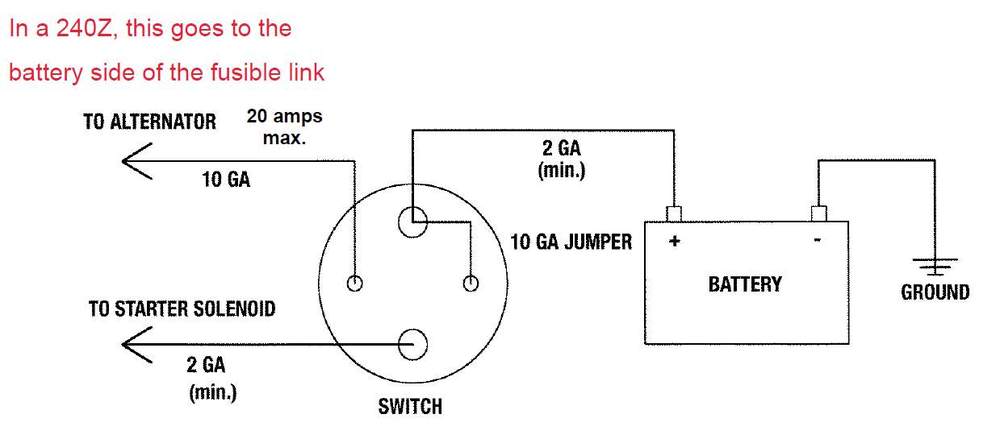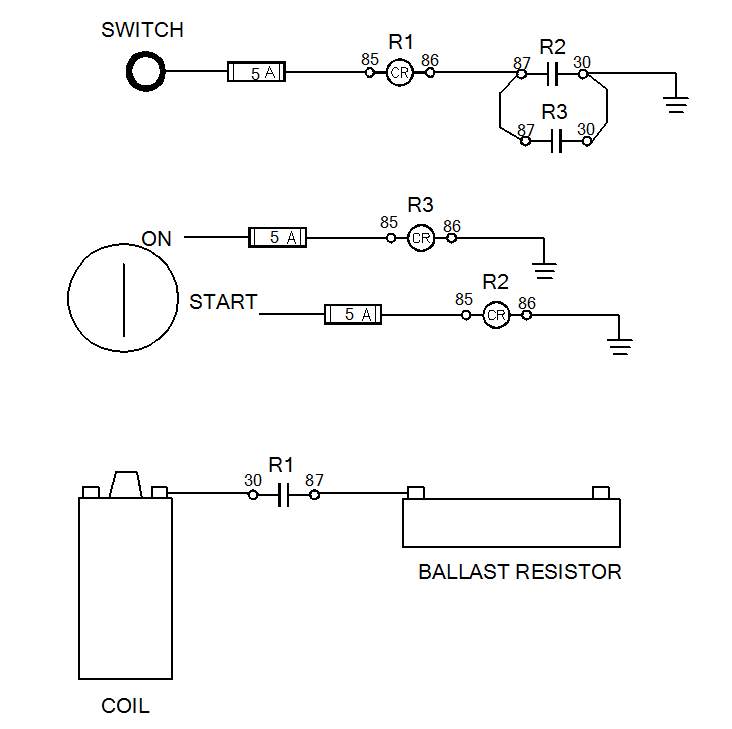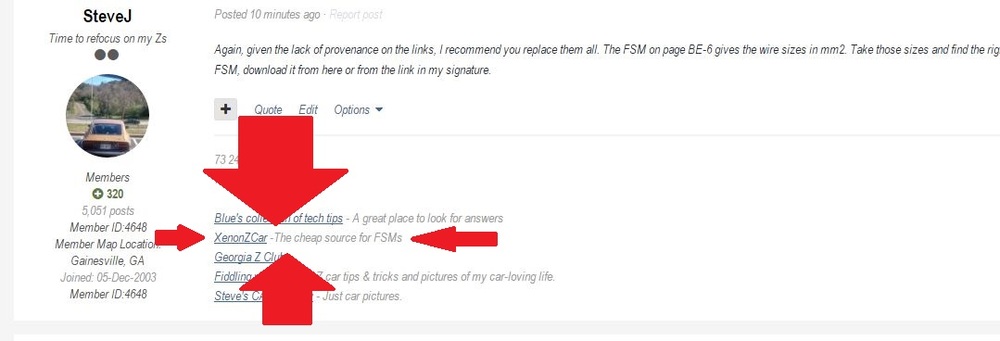Everything posted by SteveJ
- Can't maintain fuel pressure
-
[2017] What Did You Do To/with Your Z Today?
Of course, if you saw my other thread, you'd know that I'm still having issues with fuel pressure. If this keeps up, I'll just part the damn thing out.
- Can't maintain fuel pressure
- Can't maintain fuel pressure
-
Can't maintain fuel pressure
Background: When I got the car, it was a stock L26 with flat top carburetors. Three years ago, I changed out the carburetors for round top carburetors. For a while I noticed that after I had been running at freeway speeds, returning to stop-and-go traffic would result in hesitation during acceleration until it seemed like the car cooled down for a while. I enriched carburetors some more, and the problem seemed to go away. In February, I did an engine swap, putting in an L28 with an N47 Maxima head. Since the head wasn't configured for a mechanical fuel pump, I just ran the stock electric fuel pump. The hesitation returned, even with enriching the carburetors even more. I installed a fuel pressure gauge and found the pressure to be around 2.5 PSI. I changed out to a small Holley fuel pump (12-147), but the pressure dropped down to 2 PSI. Saturday I changed out the fuel pump for a bigger Holley fuel pump with a fuel pressure regulator (L:12-802-1). The FPR was installed downstream of the fuel rail. At first, the pressure was at 12 PSI. I opened the small orifice on the exit of the fuel rail. The pressure dropped to 6 PSI. Moving the adjustment on top of the FPR did not raise or lower the fuel pressure. I moved the FPR to in front of the fuel rail. The pressure held at 4 PSI. I thought I was good to go. Today I drove the car to help a friend with his Z. It did fine on the trip down. It did fine when I took him in a ride in the car. When I was leaving, the old problem returned. I checked the fuel pressure when I got home. It was below 2 PSI. I moved the FPR back to downstream of the fuel rail. Pressure was 2.5 PSI. Again, using the adjustment screw did not change the pressure. I am out of ideas.
-
[2017] What Did You Do To/with Your Z Today?
I have been battling fuel pressure/lean conditions since doing my engine swap. Since the new motor has an N47 head, I'm only using an electric fuel pump. The stock one didn't cut it. The baby Holley fuel pump was worse. Too bad since it mounted right where the stock pump did. I went with a bigger Holley with a fuel pressure regulator. I had to play with the hose routing some, but at the end, I got the pressure I needed. After some tweaking (going out to 3 turns), the engine didn't act lean on acceleration, even after it warmed up. Keep your fingers crossed for me.
-
[2017] What Did You Do To/with Your Z Today?
So does that mean we have a baseline value for a 280ZX shell?
-
Safely wire a rear-mount battery with kill switch
The kill switch doesn't affect jumping the battery. The problem is that a dead battery is a heavy load on the alternator. In the case of the OP, the current draw was greater than the 20A rating of the alternator circuit of the switch. You might be able to double up by placing the alternator in the solenoid terminal if the stud is long enough.
-
Help with timing in LA
Funny, I didn't need to do anything like that. A lot of people say it can't happen, but I have seen on more than one occasion that a Z car distributor was installed 180 degrees out.
-
Help with timing in LA
What guide did you use in doing the wiring? Did you get the ZX distributor mount? Are you sure you have a good ignition module? I had one arrive DOA on a rebuilt distributor. Post some photos of your work. Be sure to detail where you got the positive and negative for the module.
-
Safely wire a rear-mount battery with kill switch
Yeah, if you put too much heat through it, you could weld the contacts. It is an interesting issue, though. The battery kill switch is designed for race applications where you wouldn't be expecting to start out with a nearly dead battery. You might want to opt for a tow the next time.
-
Safely wire a rear-mount battery with kill switch
So the problem was operator error. I missed that in the first read.
-
what year is this VIN HLS30-22920
Do you still have the door jamb plate?
-
Safely wire a rear-mount battery with kill switch
Something is not right here. If you have the jump a properly wired car with the jumper cables in the correct location (in the back at the battery), you would not have much current going over the 20A contacts of the Moroso switch. It should be going to the solenoid. As I understand it, the kill switch is designed to isolate the battery from the rest of the electrical system. As a matter of fact, that is how the Moroso switch is described on Jegs.com. As for having a 100A alternator, you still should not have much current going back to the battery. If you are pulling 20 A on that connection, you have a dying or dead battery. If you are trying to use the battery kill switch as an overall kill switch, you could wire up something like the second picture. It would isolate the battery and kill the ignition. With the ignition cut, the engine stops, and the alternator stops with it.
-
Ballast resistor
The starter motor is a very sizable load. It will draw a lot of current and pull down your voltage, especially with an older/weaker battery. The fuel pump is nothing compared to the starter. Post the voltages you are measuring, starting with the battery and the car off.
-
Possible fuel problem. 1976 280z 2+2
Do not use the AtlanticZ. Use the FSM (Factory Service Manual). As for the link in my signature, refer to the attached picture. You will not get ready-made fusible links from a parts store. You may be able to get fusible link wire from them, and you will have to cut the wires to length and attach lugs to the ends. If you don't get a good crimp on the lug, you will have issues further down the road. On the other hand, you could purchase ready-made fusible links from the links I posted. I'm not sure why you insist upon being so obtuse, especially when you appear to lack the requisite knowledge to perform the repair properly.
-
Possible fuel problem. 1976 280z 2+2
Again, given the lack of provenance on the links, I recommend you replace them all. The FSM on page BE-6 gives the wire sizes in mm2. Take those sizes and find the right table on this site: http://www.rapidtables.com/calc/wire/awg-to-mm.htm. That will give you the gauge of the wire. If you don't have a copy of the FSM, download it from here or from the link in my signature.
-
Possible fuel problem. 1976 280z 2+2
1. Don't trust that chart. 2. Fusible link wire should burn up and leave the insulation intact. Considering the condition of the one link, that doesn't look like what happened in your car. 3. You can get genuine links from your local Nissan dealer (http://www.courtesyparts.com/oe-nissan/24161a0100 and http://www.courtesyparts.com/oe-nissan/24161y0100) or MSA (http://www.thezstore.com/page/TZS/PROD/12-4329 - with covers if you need them or just these links: http://www.thezstore.com/page/TZS/PROD/12-4334, http://www.thezstore.com/page/TZS/PROD/12-4335, http://www.thezstore.com/page/TZS/PROD/12-4336) Image courtesy of MSA. These links don't cost that much, and they can prevent very expensive electrical fires.
-
Possible fuel problem. 1976 280z 2+2
That'll cause some issues. I hope those other home-made links are made of fusible link wire and not regular wire. Judging from the destroyed one, I'd doubt it.
-
Ballast resistor
What year Z, and where did you get the wiring diagram you were looking at? From that I can give you a better detailed description of what should be going on.
-
'78 Fuel Pump Relay gone bad?
Okay, the harness at the fuel pump relay has 4 wires: white/black, black, green/blue and green/blue. If the white/black wire never has 12VDC+, you don't have the voltage to energize the coil. If the black wire does not have continuity with the negative post of the battery, you have a grounding issue. If you see voltage on the white/black wire, you have continuity between the black wire and negative post, and you jumper the green/blue wires together to get a running pump, you have a relay issue. Of course, with no oil pressure and the alternator still, you will not see voltage on the white/black wire.
-
"Thee" SU Float Level Tool
https://jimsgarage.wordpress.com/2006/09/14/the-grose-jet/
-
Possible fuel problem. 1976 280z 2+2
For your first problem, if it fires when starting and quits when the key is in ON, it is either the ballast resistor, ignition switch, or wiring issue between the switch and ballast resistor. For your other problem, what is the voltage? Have you compared the output of your charging system against what it says in the factory service manual?
-
Wow not even half way there
Yeah, but you're probably Army, and I wasn't typing slowly.
-
Wow not even half way there
Um, do you actually have a filter on that respirator? And I'm not talking about that nose bra you have on. What brand/model respirator is that? You'll need a HEPA cartridge to go on it. Do you know how to test the seal?








